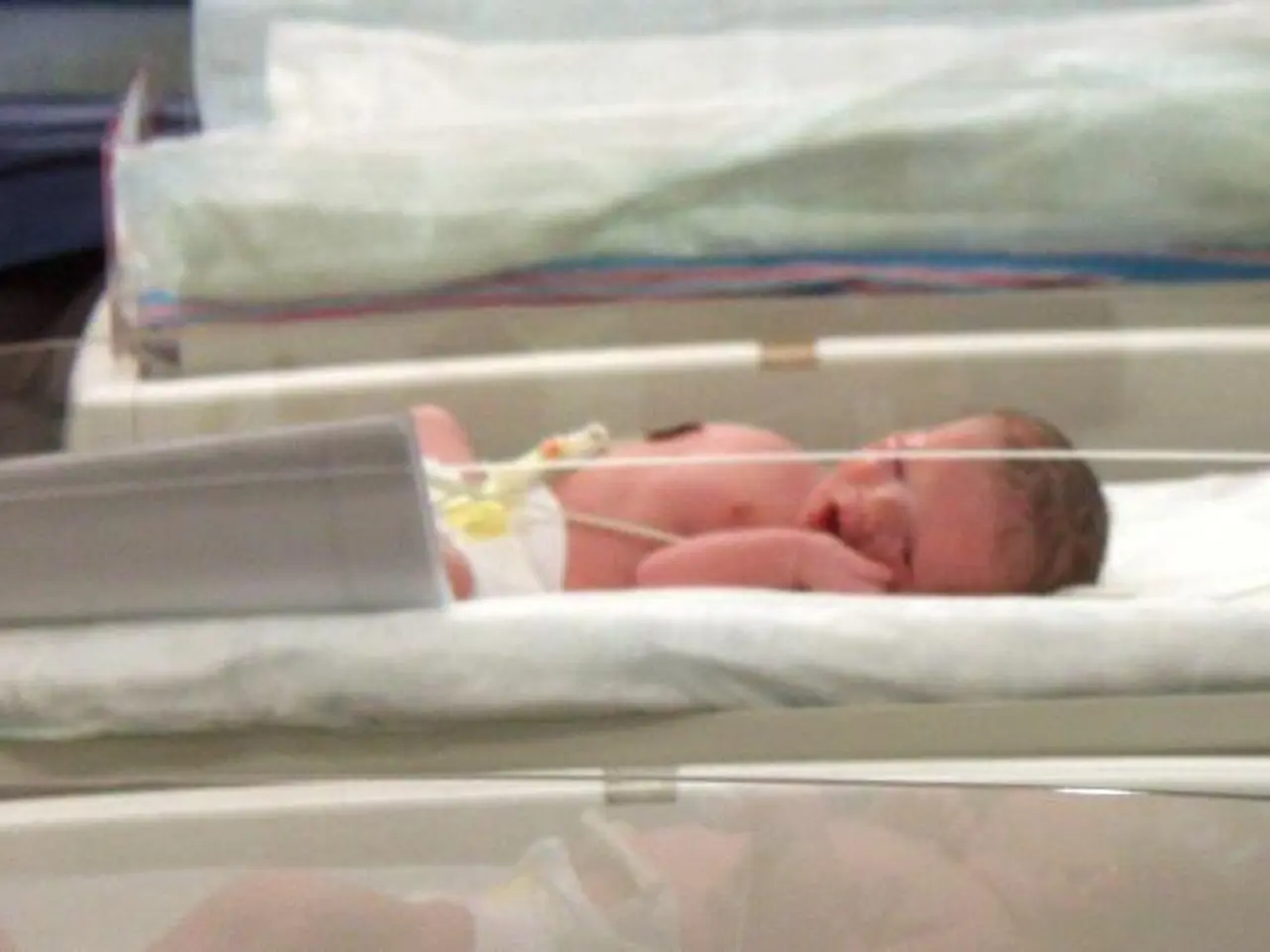Genetic Leukemia: Characteristics, Signs, and Remedies
Congenital leukemia, a rare but serious condition, is a leukemia diagnosis that occurs at birth or within the first four weeks of life. This type of leukemia primarily falls under two subtypes: acute myeloid leukemia (AML) and acute lymphoblastic leukemia (ALL).
AML, accounting for two-thirds of reported cases, often involves the M4 and M5 subtypes, which can present with skin involvement such as leukemia cutis or chloromas (tumors of leukemic cells). ALL subtypes include various genetic variants of precursor B-ALL and T-ALL, though they are less frequently seen in congenital leukemia.
Associated risk factors for congenital leukemia include genetic abnormalities, such as rearrangements involving the MLL gene in precursor B-ALL, which are linked to aggressive leukemia forms in infants. Down syndrome and inherited bone marrow failure syndromes also increase the risk of congenital and early childhood leukemias due to their underlying predispositions affecting hematopoiesis. Age is a critical factor for prognosis, with infants typically at higher risk.
A Complete blood count (CBC) is a common blood test for infants with leukemia, revealing an excess of white blood cells and not enough red blood cells. A peripheral blood smear, a test where a blood sample is spread on a glass slide and examined under a microscope, can also help identify abnormal blood cell changes. Flow cytometry, a test that shows how a sample of cells from blood or bone marrow reacts to antibodies, helps doctors identify the specific leukemia subtype.
The outlook for those with congenital leukemia will often depend on the type of leukemia, the specific genetic mutations involved, and the response to treatment. For instance, chemotherapy can increase the average survival for infants with a KMT2A translocation in AML to 142 days compared to only 25 days with supportive therapy. The overall 2-year survival rate for congenital leukemia is 44.2%, with a median lifespan of 210 days.
Infants with ALL receive different treatment than older children with ALL, involving a range of chemotherapy drugs. The treatment for infants with AML is usually the same as for older children and may include chemotherapy alongside the drug gemtuzumab.
In summary:
| Subtype | Characteristics/Risk Factors | |------------------------------|------------------------------------------------| | Acute Myeloid Leukemia (AML) | M4 and M5 subtypes often with skin involvement; chloromas common[3] | | Acute Lymphoblastic Leukemia (ALL) | Various precursor B-ALL and T-ALL subtypes; MLL rearrangements, genetic mutations[2] | | Risk factors | Down syndrome, inherited marrow failure syndromes, MLL gene rearrangements, infant age <1 year[2][4][5] |
- Individuals with Down syndrome have a higher risk of developing congenital leukemias due to their underlying predispositions affecting hematopoiesis.
- In cases of congenital leukemia, the type of leukemia and specific genetic mutations involved are crucial factors in determining the prognosis, with chemotherapy such as the KMT2A translocation in AML potentially increasing the average survival to 142 days.
- Science plays a significant role in identifying and treating congenital leukemia, with tests like Complete blood count (CBC), peripheral blood smear, and flow cytometry being essential tools for doctors to determine the specific leukemia subtype.
- For infants diagnosed with congenital leukemia, medical-conditions including health-and-wellness, along with the appropriate treatment plan, play a vital role in managing their potentially life-threatening medical conditions.




